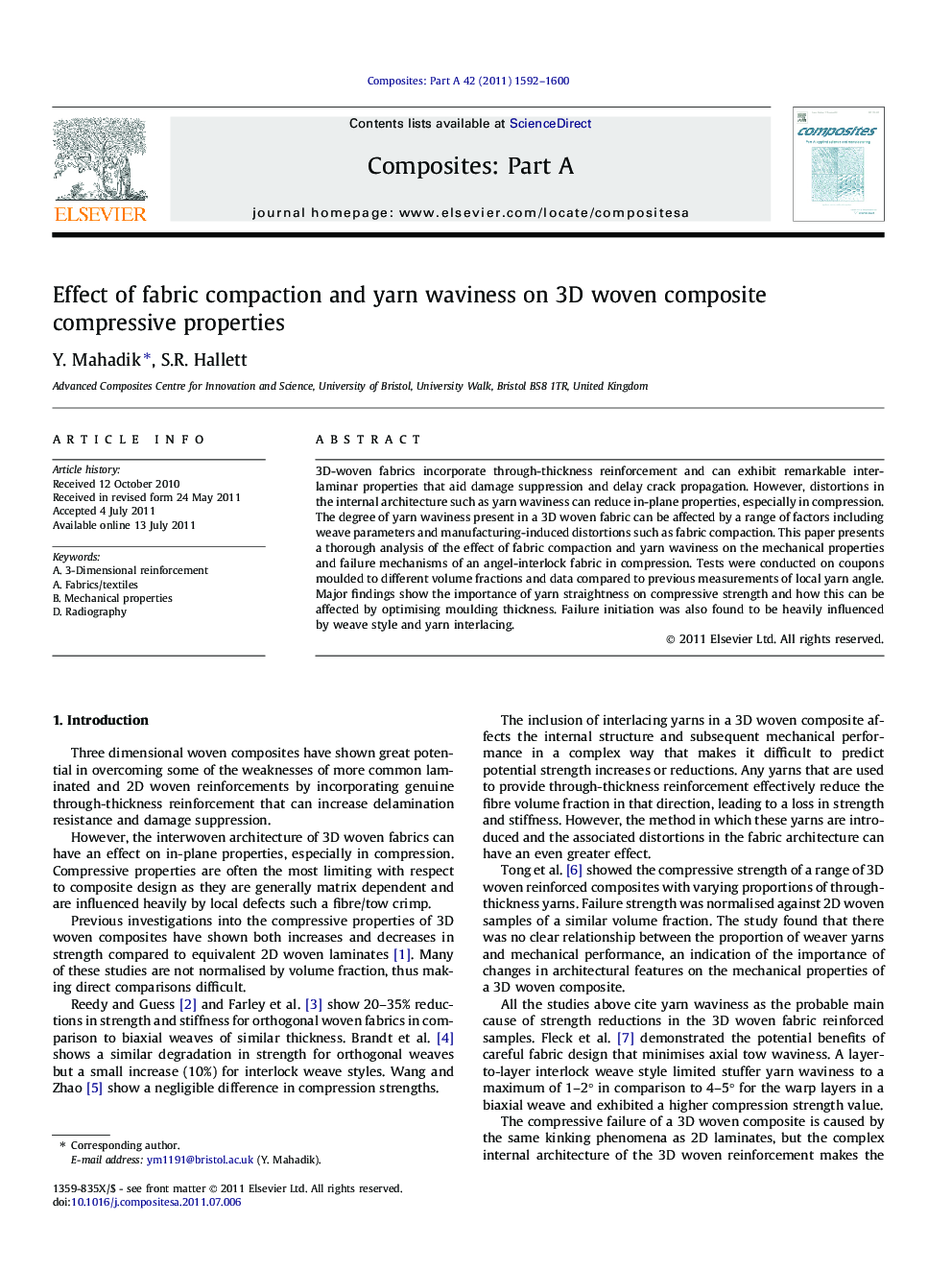| Article ID | Journal | Published Year | Pages | File Type |
|---|---|---|---|---|
| 1466901 | Composites Part A: Applied Science and Manufacturing | 2011 | 9 Pages |
3D-woven fabrics incorporate through-thickness reinforcement and can exhibit remarkable inter-laminar properties that aid damage suppression and delay crack propagation. However, distortions in the internal architecture such as yarn waviness can reduce in-plane properties, especially in compression. The degree of yarn waviness present in a 3D woven fabric can be affected by a range of factors including weave parameters and manufacturing-induced distortions such as fabric compaction. This paper presents a thorough analysis of the effect of fabric compaction and yarn waviness on the mechanical properties and failure mechanisms of an angel-interlock fabric in compression. Tests were conducted on coupons moulded to different volume fractions and data compared to previous measurements of local yarn angle. Major findings show the importance of yarn straightness on compressive strength and how this can be affected by optimising moulding thickness. Failure initiation was also found to be heavily influenced by weave style and yarn interlacing.
